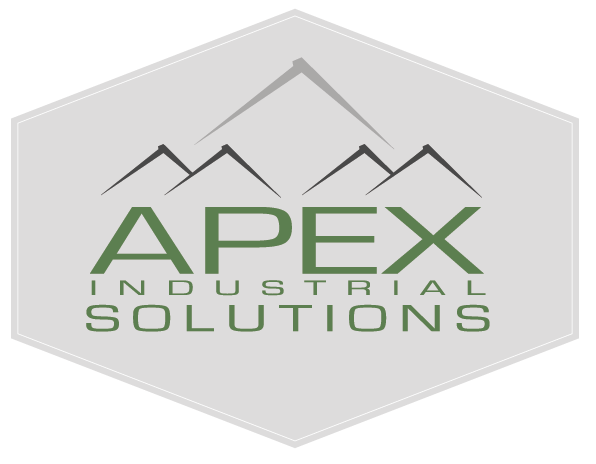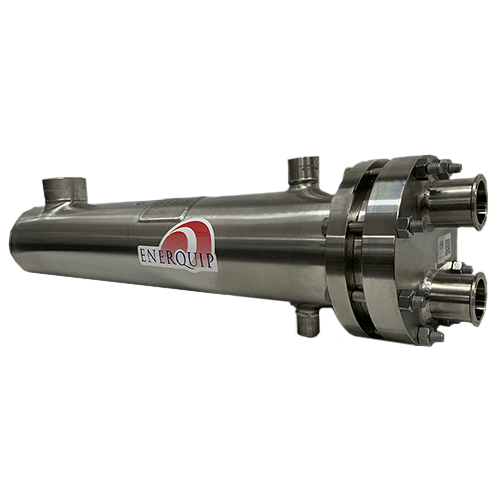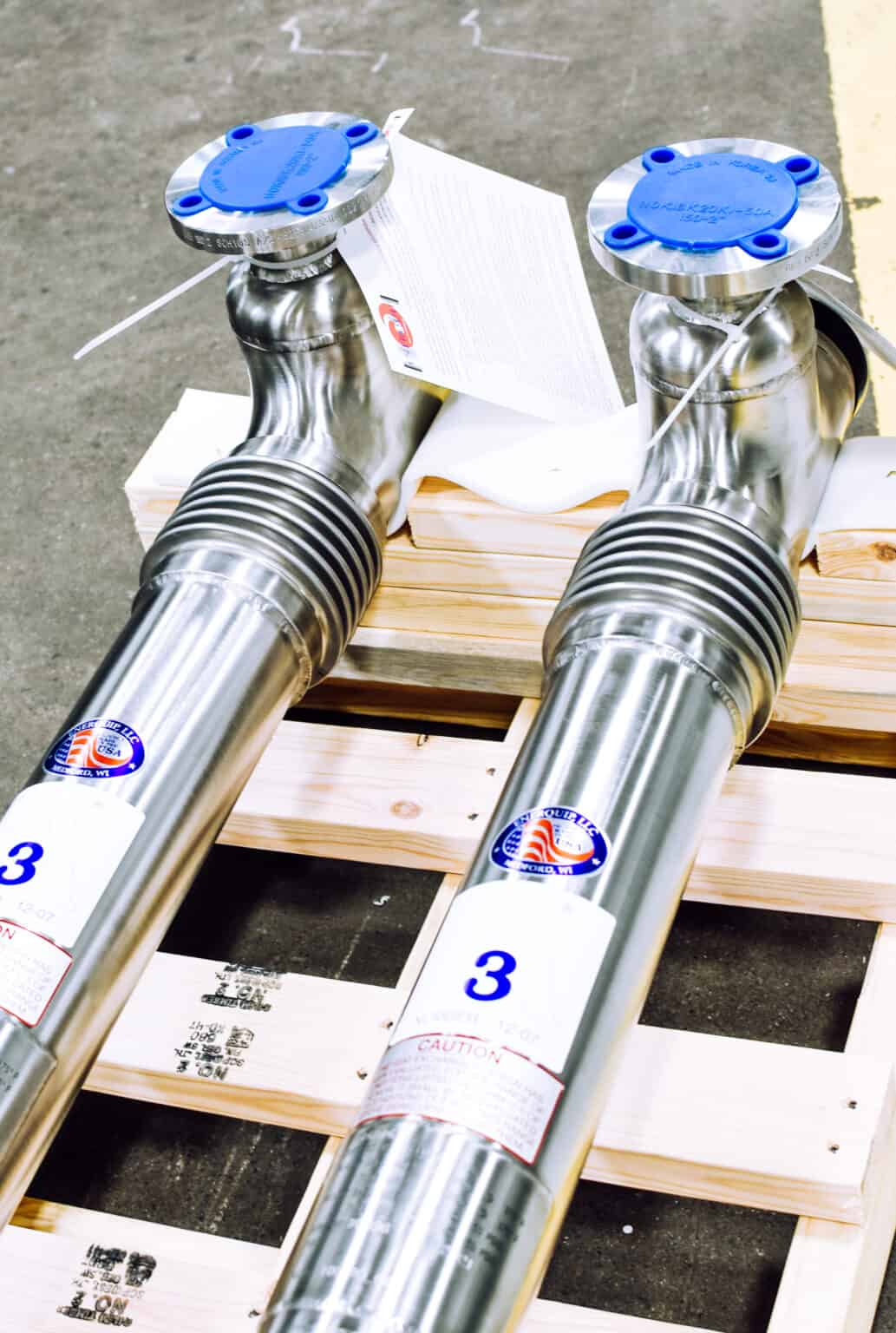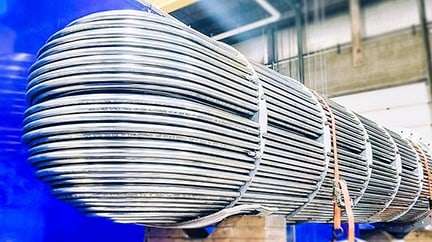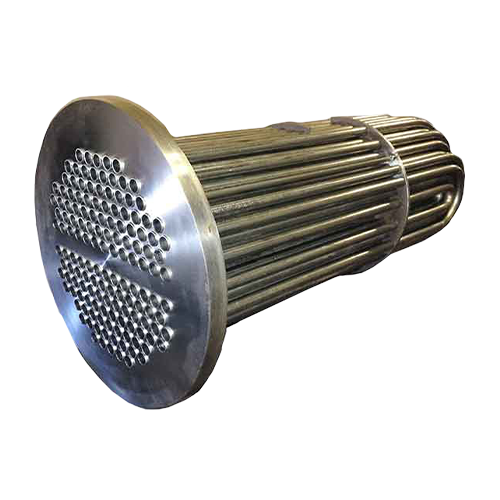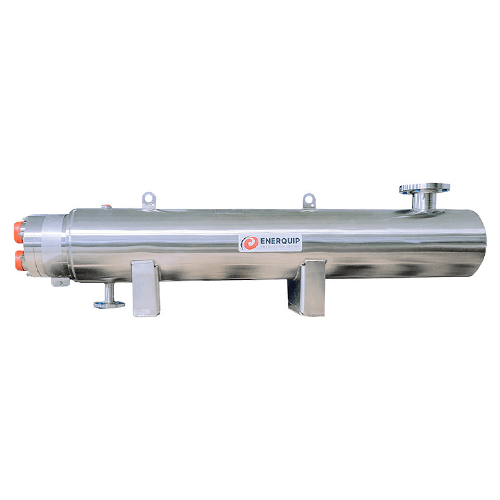Sanitary Heat Exchangers
Shell and Tube heat exchangers come in different forms that can be customized. Their ability to fit in countless sizes and configurations makes them a versatile solution. Adaptability makes shell and tube heat exchangers suitable for a wide range of applications. No matter the shape or size, they all provide three key benefits.
First is having a small spatial footprint. Not only does this free up space on the production floor, but it also reduces the risk of heat pockets that can damage other electrical components. Another great advantage is their minimal environmental impact. To remain effective, heat exchangers must run continuously to prevent overheating of control panels. As heat exchangers don’t rely on additional equipment to operate, they use less energy than other temperature control methods.
Lastly, shell and tube heat exchangers have lower operating costs than other options. Due to the reduced need for extra equipment, heat exchangers are inherently cheaper to maintain and operate.
The benefits don’t end there. Additional advantages of using a sanitary shell and tube heat exchanger include:
- Processing of fiber or particulate products
- High working pressure
- High working temperatures
- Simple inspection and disassembly
- High security in aseptic processes
- Easy to customize
Downloads:
